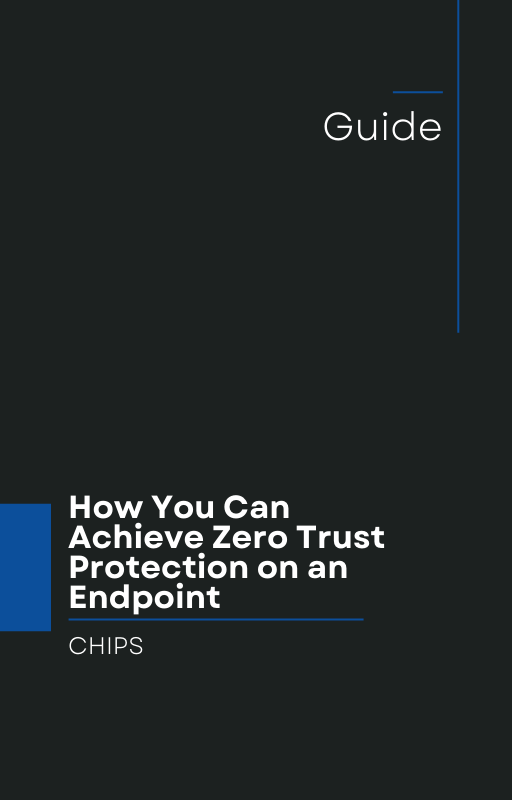A recent investigation by VirusTotal uncovered a sophisticated phishing campaign that weaponizes SVG image files to deliver malware. What makes this campaign especially dangerous is how deeply it undermines traditional defensive strategies: many of the malicious SVGs initially evaded antivirus engines and only flagged when new AI-based code analysis was applied. BleepingComputer
If defenders rely solely on “detect and respond” — i.e. waiting for antivirus or EDR tools to spot suspicious behavior and then remediate — attacks like these can slip through the cracks. SVGs are deceptively simple graphics formats but with <foreignObject> and embedded JavaScript, threat actors can render fake portals (e.g. impersonating government websites), lure users to download password-protected archives, and then sideload malicious code.
This kind of threat should be a wakeup call for security leaders and business owners: detection alone is no longer sufficient.
Understanding this SVG-based attack
Here’s a breakdown of how the campaign worked:
-
Malicious SVG masquerades as a trusted document
The attackers embedded code in SVG files to render convincing portals imitating Colombia’s judicial system — complete with case numbers, download progress bars, and visual cues to establish authenticity. -
Use of AI insight to uncover hidden threats
VirusTotal’s AI Code Insight engine, when extended to support SVGs, detected anomalous script behavior, even in files that had zero conventional antivirus detections. -
Stealthy payload execution
The SVG triggers a prompt to download a password-protected ZIP archive. Inside is a renamed legitimate executable (e.g. Comodo Dragon browser), a malicious DLL, and encrypted files. If the user executes the file, the DLL is sideloaded, paving the way for further compromise. -
Widespread evasion
VirusTotal identified over 500 additional SVG files involved in the same campaign, all having evaded detection by standard AV before the AI engine flagged them.
In short: clever embedding of malicious code inside a seemingly innocuous image file allowed the attackers to bypass many layers of traditional protection.
Why detection & response is no longer enough
Detection-based defenses (antivirus, signature scanning, behavioral analytics) always have lag time — new malware variants or novel techniques must first be discovered, signatures written, or patterns analyzed. Meanwhile, attackers can exploit zero-day vectors, obfuscation, or file formats like SVG that aren’t traditionally scrutinized.
Even after detection, the response phase (isolation, remediation, rollback) can fail if the threat has already moved laterally, encrypted data, or implanted persistent components.
In this SVG campaign, detection lagged; only after adding SVG support to a machine-learning engine did defenders uncover it — which means many organizations would have been vulnerable until that point.
To contend with advanced threats, organizations must shift their posture from reactive “detect and respond” to proactive “isolation and containment.”
How AppGuard enables containment-first security
That’s where AppGuard comes in. Rather than hoping the threat is caught in time, AppGuard forces a paradigm shift by constraining the actions any process (especially untrusted or new code) can take. The philosophy is simple but powerful:
-
Least privilege at execution time: Even if malicious code runs, AppGuard restricts what it can do (e.g. prevent file writes to protected directories, block process injection, ban registry manipulation).
-
Micro-isolation of components: Different parts of applications or untrusted modules are isolated from one another, limiting how far an attacker can reach.
-
Prevention over detection: Malicious behaviors are prevented from taking hold in the first place rather than being detected after damage has been done.
-
Proven track record: AppGuard has been securing highly sensitive environments (government, defense, critical infrastructure) for over a decade. Now it’s available for commercial deployment.
In the face of file formats weaponized to evade detection, AppGuard’s approach ensures that even if a malicious SVG execution is triggered, the attacker cannot move laterally, write to system directories, or compromise core assets.
Why businesses must adopt proactive containment now
-
Attack surface is expanding
Attackers will continuously innovate — from SVGs to other innocuous file types, container escapes, fileless malware, etc. Detection lag will always persist. -
Damage is immediate
By the time a detection alert is raised, critical systems or data may already be breached or encrypted. -
Compliance and trust are at stake
Regulatory regimes increasingly expect stronger security postures. A reactive-only model is no longer defensible in board rooms or to customers. -
AppGuard scales for enterprises
You can deploy AppGuard across endpoints (end users, servers, workstations) with manageable overhead and robust enforcement. -
Demonstrated efficacy
A solution with a 10-year track record carries weight. Many organizations in highly regulated sectors already rely on it.
From insight to action: what to do next
Here’s how to get started:
-
Assess your current endpoint protection strategy. Ask: “Are we relying on detection first?”
-
Identify critical systems, data stores, and high-risk endpoints.
-
Pilot AppGuard in controlled environments (e.g. a department or subset of endpoints).
-
Monitor containment effectiveness, performance overhead, and attack attempts blocked.
-
Plan a phased rollout across your organization.
Call to Action for Business Owners
Don’t wait for the next SVG-based or novel file attack. Move beyond the reactive “detect and respond” model and adopt isolation and containment now.
Talk with us at CHIPS about how AppGuard can prevent incidents like the one uncovered by VirusTotal. Let’s protect your organization proactively — before a new file format, obfuscation trick, or zero-day threat slips past detection. Reach out today to schedule a consultation.
Like this article? Please share it with others!

October 5, 2025

Comments